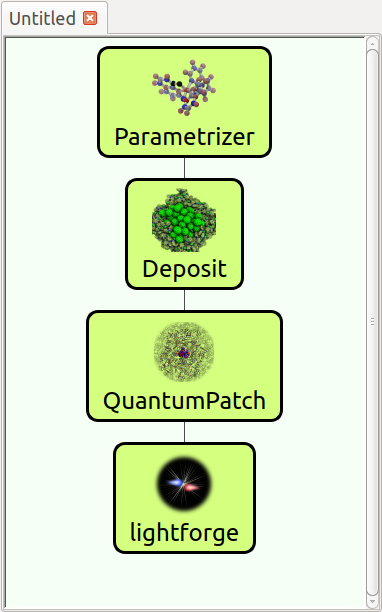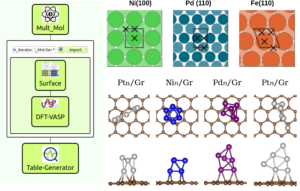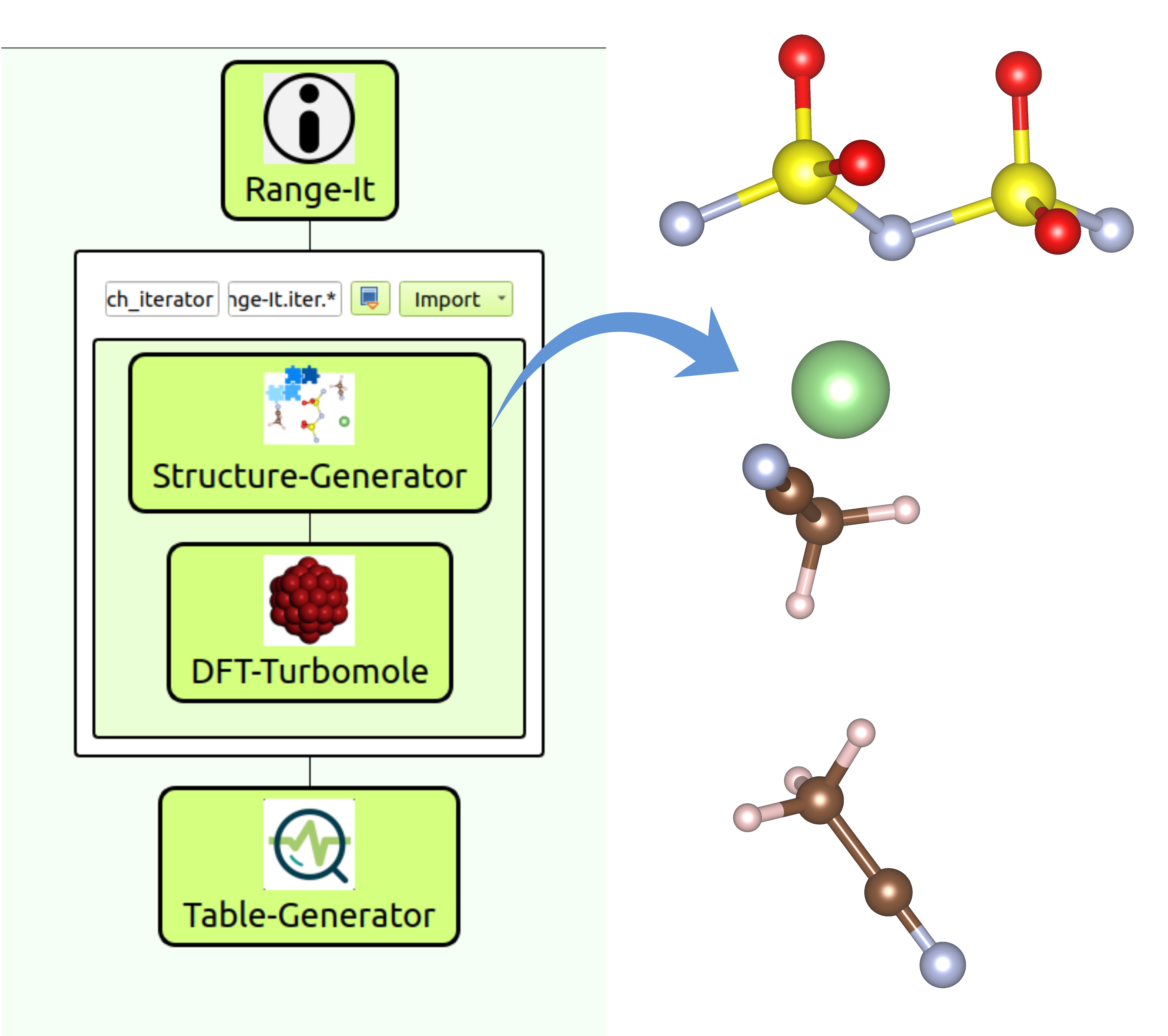We are currently looking for partners to apply SimStack in various projects. Feel free to contact us if you have a multiscale simulation workflow that you would like to realize using SimStack. Examples are given below.
Predictive OLED design
| In the field of organic electronics (OLED and OPV), industrial R&D is still dominated by time-consuming and costly experimental trial&error approaches. Using SimStack, a bottom up multiscale modeling workflow is implemented that allows the prediction of device properties without the use of external parameters, e.g. from experiment. By combining four methods acting on different time and length scales, material developers and device manufacturers can identify microscopic bottlenecks in device performance, fully in the computer.
Check the Nanomatch Homepage for further information. |
 |
DFT-Surface
Understanding the adsorption nature and reactions of molecules at metal surfaces or graphene sheets is vital for heterogeneous catalysis or battery materials, which might bridge the industrial needs for material properties and aging processes. This workflow combines four different WaNos to absorb a set of molecules over a chosen metallic surface or graphene layer. The simulation is performed within the DFT approach, and the surface generation is fully automatized and supports any surface type for any atomic species.
Find more details here.
Electrolyte Screening
To understand the solvation structure-conductivity relationship of a concentrated-salt system, and analyze the electronic structure of the solvation complex in the sense of binding strengthen between cation and coordinated solvent/anion. We propose this workflow, which essentially is an artificial solvation structure that includes numerous possibilities of a solvent-salt system and all possible combinations. This binding strength will work as a descriptor for the solvation structure. This workflow combines four different WaNos to generate a set of molecular configurations. The simulation is performed within the DFT approach, and the structure generation is fully automatized and supports any molecule type.
Find more details here.

